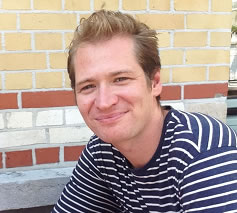© University of Kent - Contact | Feedback | Legal | FOI | Cookies
Research
The rose-ringed parakeet is listed amongst the top 100 worst alien species in Europe, and since the 1970s has rapidly established itself in over 100 cities across the continent and beyond. They have begun to pose problems in urban and rural areas such as disturbance to humans (including potential to transmit diseases to livestock and humans), competition with native wildlife and, increasingly, as an agricultural pest, already prompting changes in national policies. Worryingly, farming practices that adapt to global climate change and a warmer Europe facilitate the continued expansion of parakeet populations, amplifying the problems parakeets pose for European agro-economy. More generally, a temporal, spatial and social perspective of biological invasion is crucial to address, understand and solve the ‘alien species problem’ but is lacking. This Action will help to (i) better understand why some species such as parakeets are highly successful invaders, (ii) harmonise methodologies to predict agricultural, economic, societal and ecological impacts across Europe, and the means to mitigate them, (iii) create a virtual European Monitoring Centre for all invasive parrot species, and (iv) transfer results to policy and society. The Action fulfils EU 2020 Biodiversity Strategy, Convention on Biological Diversity and Syracuse Charter recommendations on invasive species.
Demography
Dr Diederik Strubbe: Action Vice-Chair

I am a biogeographer researching processes affecting the invasion success of non-native species. I combine observational, experimental and niche modelling techniques to unravel how species introduced to areas beyond their native distribution ranges cope with new environmental conditions, and how such ‘invasive species’ can impact native communities and alter ecosystem functioning. Based on empirical studies of habitat selection and use, I employ a range of ecological niche/species distribution modelling techniques to predict patterns of geographical spread and impacts of invasive species. This research contributes to a better understanding of the factors affecting the accuracy and reliability of forecasts of invasion risk, and thus to the development of cost-effective invasive species management solutions.
Recent projects include the study of niche conservatism, as understanding the mechanisms underlying the rate at which species adapt to new environments is crucial for anticipating potential distributions of non-native species. I also research how species dispersal capacities and landscape connectivity interact to affect patterns of range expansion of invasive species and of (fragmented) native populations under climate change.
Furthermore, I am involved in a large-scale study aimed at predicting the eco-evolutionary response of natural communities to urbanization, and assist biodiversity conservation projects in Latin America (systematic conservation planning in the High Andes, reintroduction ecology of macaw species).